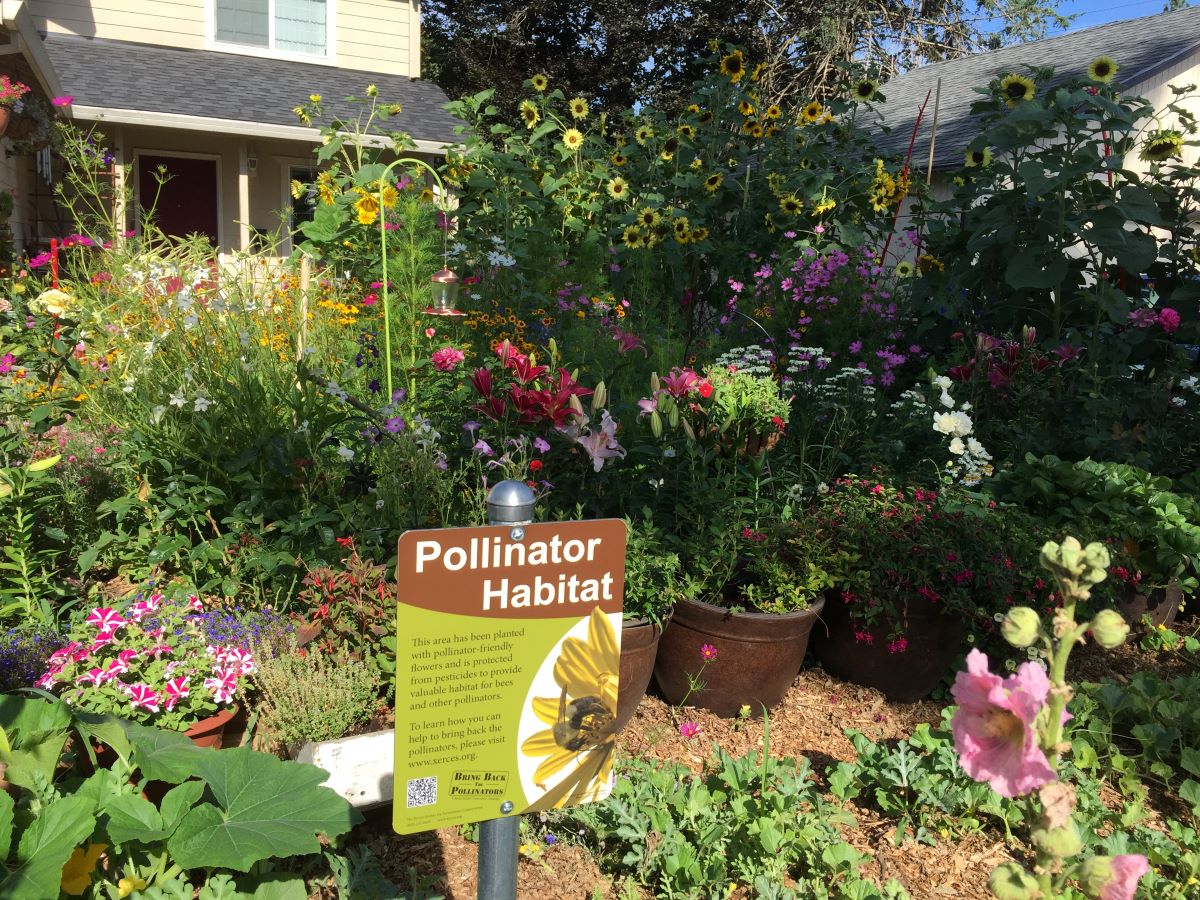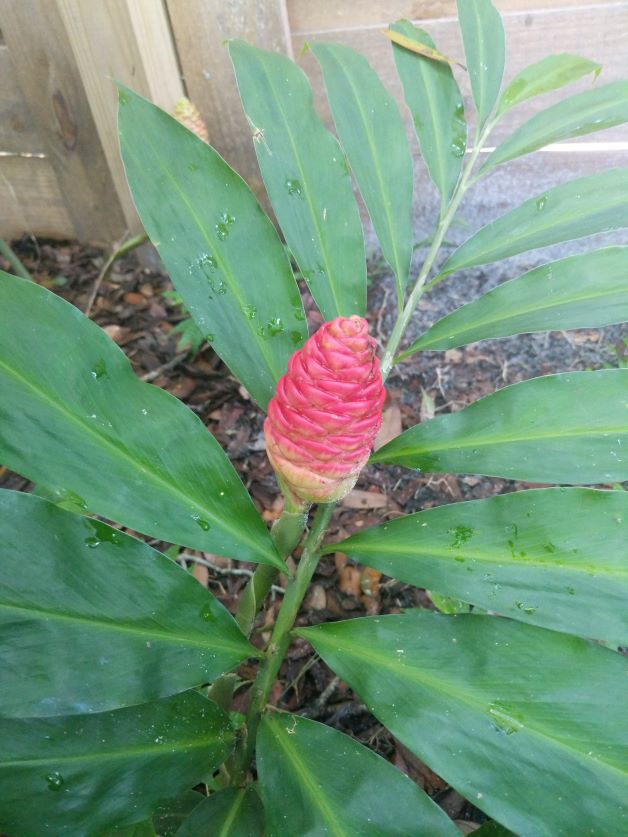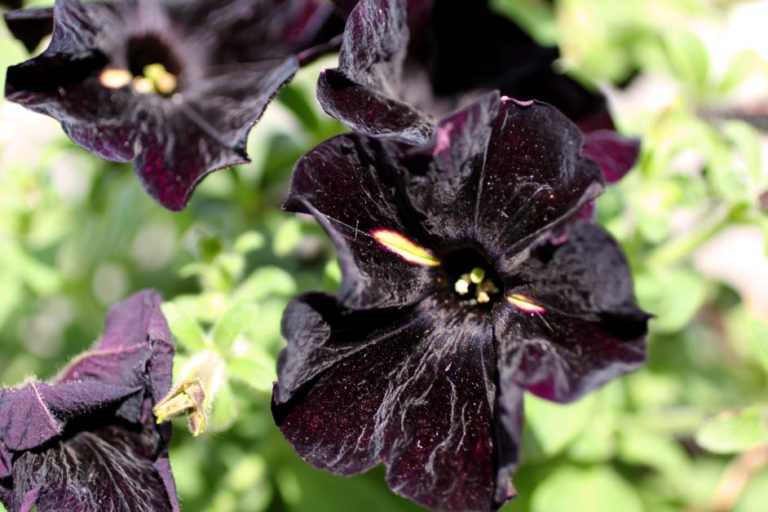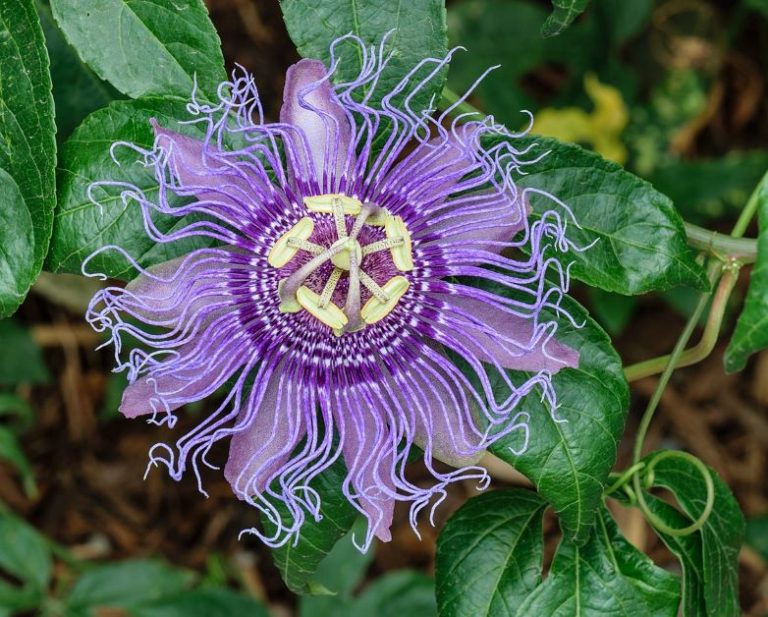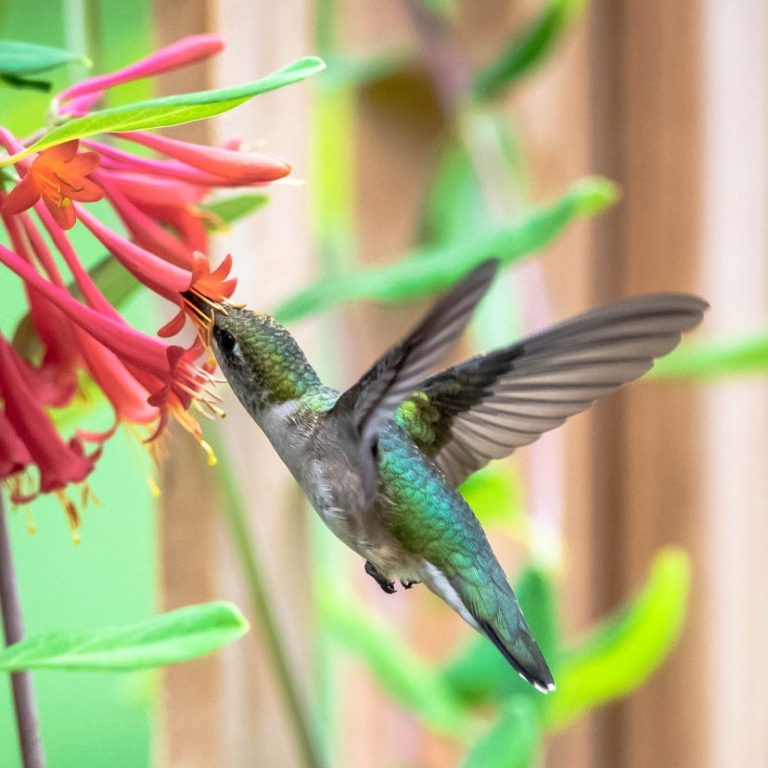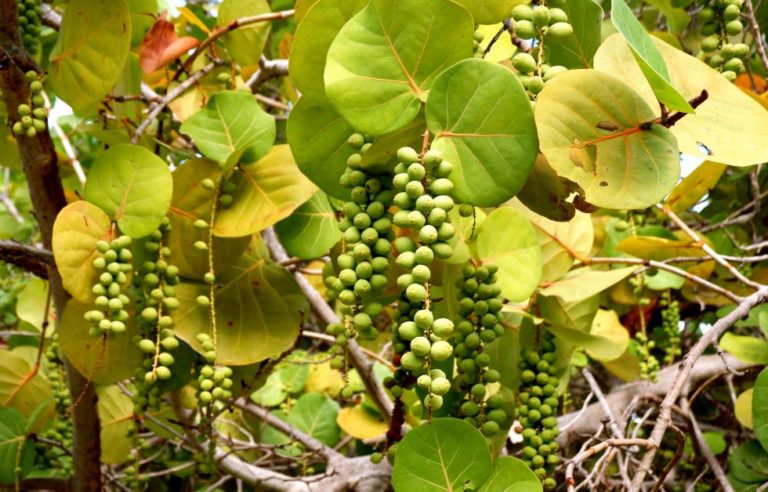Best Florida Ground Cover Plants
I hate lawns. With the right planning, replacing your grass with ground cover will give your yard a more natural look that’s also prettier than boring old sold.
There are a ton of benefits to growing a natural landscape with ground cover instead of tending to a meticulously manicured lawn:
- Save time with little to no mowing
- Save money with little to no watering
- Save the environment with less fertilizer runoff
- Attract pollinators, birds, and butterflies
- Encourage Florida native species
If you’re ready to take the plunge into the no-lawn lifestyle, I’ve curated this list of the best low-maintenance Florida ground cover plants.
Things to Think About When Choosing Ground Cover
Before you go ripping up your lawn, it’s important to choose ground cover species that are suited for your area.
Each plant has its own light, water, soil, and temperature requirements. If you live on the coast, then you need to consider the plant’s salt tolerance, as well.
The species in this list are all fairly easy-growing. It’s still important to check each plant’s specific requirements before adding them to your landscape. You’ll also have to decide whether you need a plant that can take foot traffic or if you’re looking to fill out a border or areas around trees.
1. Perennial Peanut (Arachis glabrata)
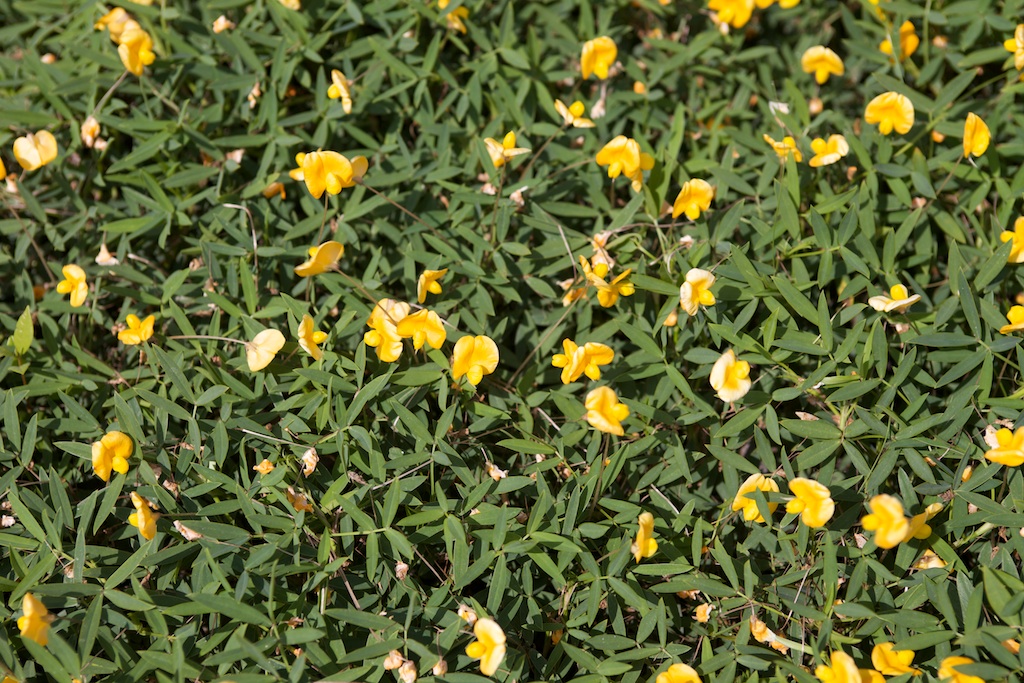
If you’re looking for Florida ground cover with small yellow flowers, then perennial peanut is for you.
Perennial peanut grows to be 4 to 6 inches tall. You can plug it into an existing lawn and let it take over, or you can buy it as sod. It’s an evergreen in Central and South Florida but dies back to the rhizome in the cooler North.
- Light: full sun
- Drought tolerant: yes
- Foot traffic: low
- Soil: loamy to sandy
- Salt tolerance: yes
- Florida native; no
2. Sunshine Mimosa (Mimosa Strigillosa)
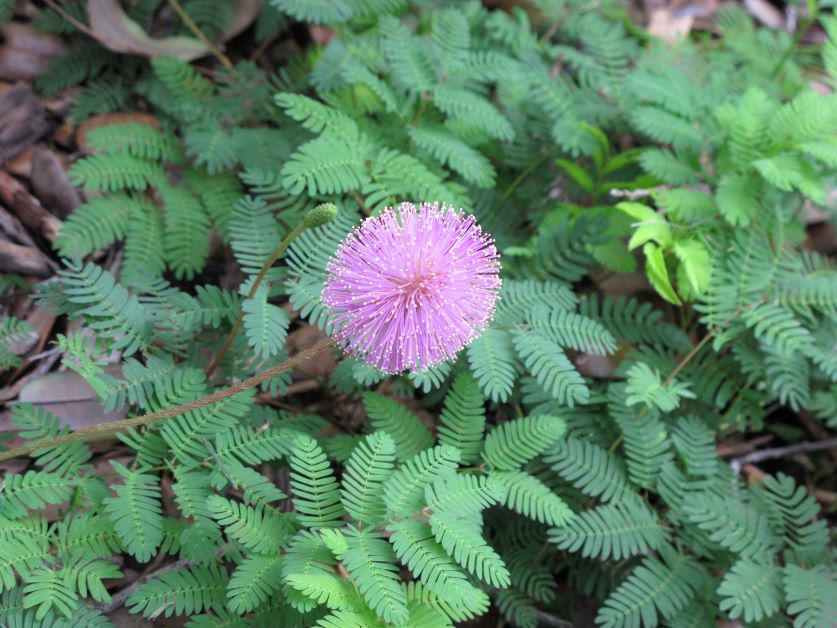
Also known as the touch-me-not, sunshine mimosa has a really neat feature – its fern-like foliage curls up on its own if you touch it. The puffy purple flower it produces looks like no other and is very good for attracting pollinators and butterflies.
This plant is not evergreen and drops its leaves when it gets cold. Because of that, you may want to use sunshine mimosa as an accent but not completely replace your lawn with it. Otherwise, your yard won’t look very nice in winter.
- Light: full sun to part shade
- Drought tolerant: yes, once established
- Foot traffic: low
- Soil: loamy to sandy
- Salt tolerant: no
- Florida native: yes
3. Beach Sunflower (Helianthus debillis)
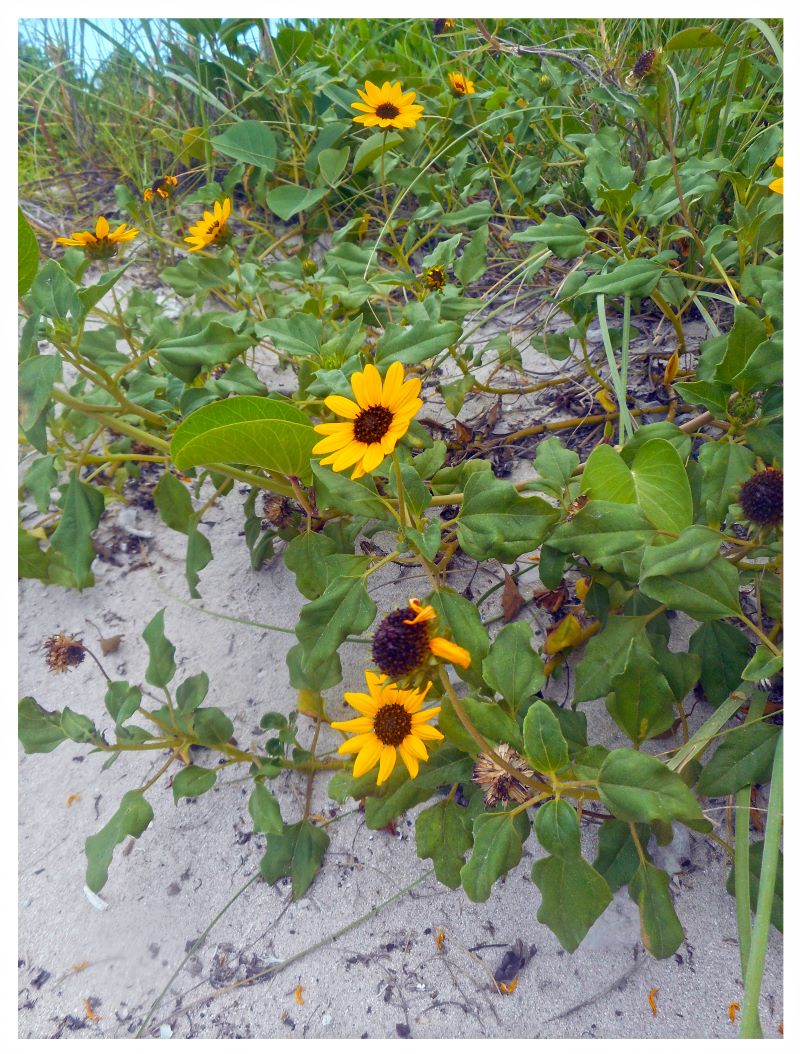
Beach sunflower is the perfect border plant for coastal and inland homeowners alike. This low-lying vine is self-seeding and can take over a large spot in a relatively short amount of time. It has small sunflower heads that follow the path of the sun as it moves across the sky.
To learn more about the beach sunflower, check out my article on Florida native and edible sunflowers.
- Light: full sun
- Drought tolerant: yes
- Foot traffic: no
- Soil: sandy
- Salt tolerant: yes
- Florida native: yes
4. Aloe (Aloe vera)

Aloe might not be the first plant that comes to mind when you think of groundcover, but it does make a nice focal point when planted in clumps. Planting aloe is also practical – you can use the goop on the inside of the leaves to treat sunburns.
Aloe spreads by producing pups and grows outdoors year-round in zones 8 through 11.
- Light: part shade
- Drought tolerant: yes
- Foot traffic: no
- Soil: sandy
- Salt tolerant: yes
- Florida native: no
5. Sweet Potato Vine (Ipomoea spp.)
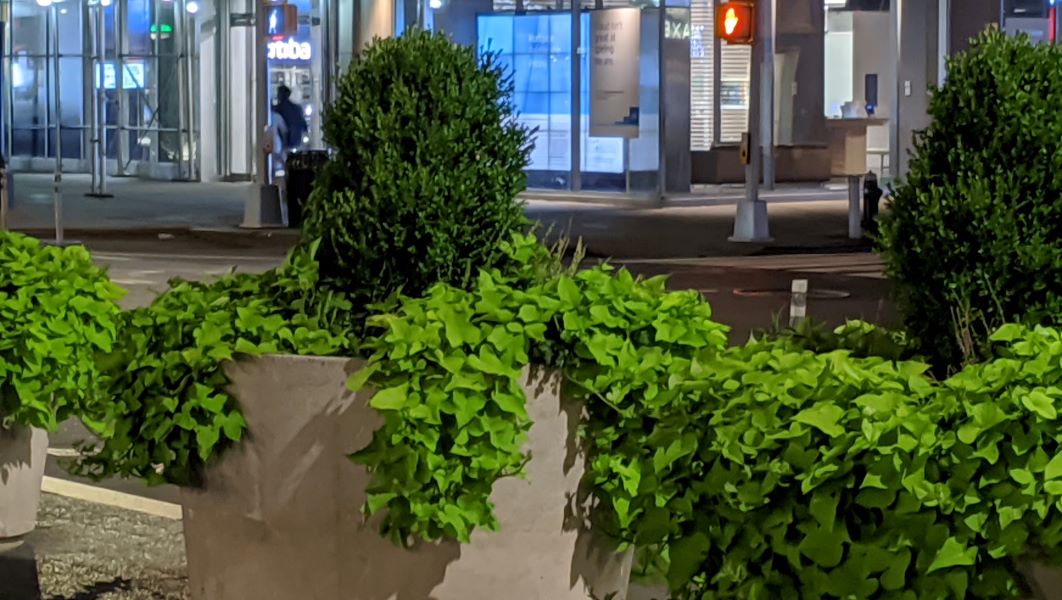
Contrary to its name, sweet potato vine isn’t edible but it’s very pretty nonetheless. It makes a nice border plant and as long as you give it space to roam, it grows well in containers.
This perennial comes in a variety of different colors, from bright green to dark purple. This plant thrives on neglect and does well with heavy pruning. Unless you’re in the hottest part of Florida, it dies back in winter and re-grows in spring.
- Light: full sun to part shade
- Drought tolerant: yes
- Foot traffic: low
- Soil: loamy to sandy
- Salt tolerant: some species
- Florida native: yes
6. Asiatic Jasmine (Trachelospermum asiaticum)
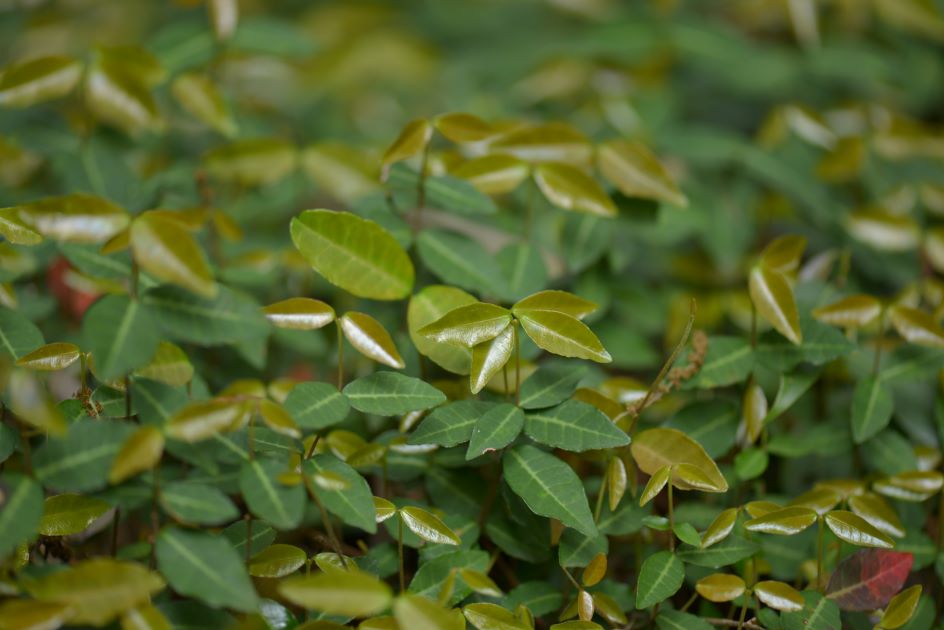
This ground cover is well-suited for anyone living in Florida – it can take the heat in zone 10 and also the chillier winter in zone 8.
Asiatic jasmine is an assuming, low-lying evergreen with tough leaves. It has the ability to bloom but usually doesn’t in Florida. It’s not a very exciting-looking plant but is great for using up space that’s too shady for much else, including grass.
Other than an annual mowing and edge trimming as needed, Asiatic jasmine does better the more you ignore it. Overwatering and over-fertilizing can make it grow unruly.
- Light: full shade to full sun
- Drought tolerant: yes, once established
- Foot traffic: low
- Soil: loamy to sandy, well-draining
- Salt tolerant: yes
- Florida native: no
7. Liriope (Liriope muscari)
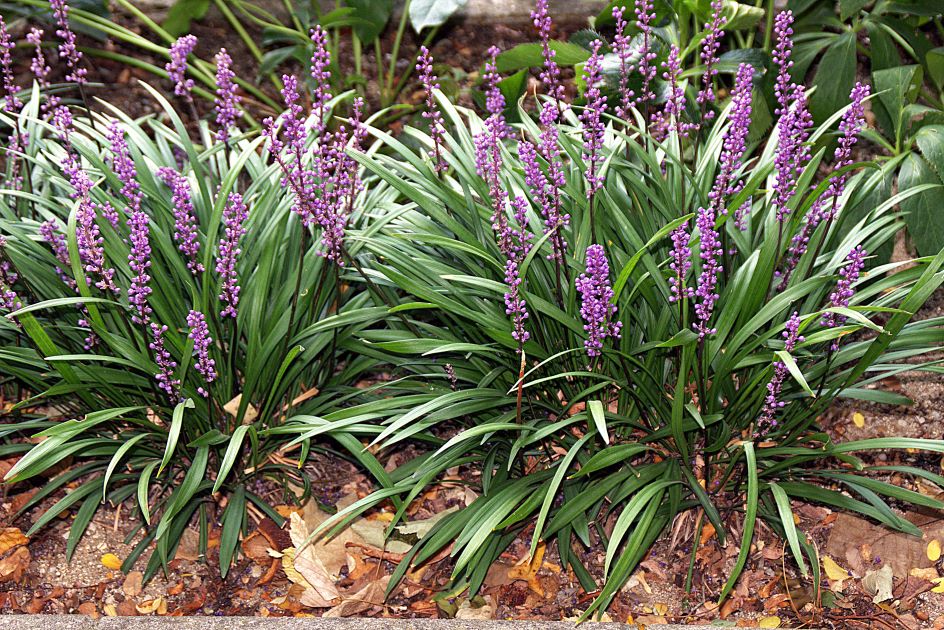
Also known as the evergreen giant and lilyturf, liriope is a clumping ornamental grass. It produces stalks of pretty purple flowers in summer and dark purple, inedible berries in the fall. This is a good border plant and ranges in size from 2 inches to 2 feet.
Liriope will grow in part-sun to shade and is moderately drought-tolerant. It doesn’t need much attention but will grow better if you fertilize it twice a year.
If you decide to add liriope to your landscape, it’s very important to make sure that you’re planting Lirope muscari and not Liriope spicata. The two species look a lot alike, but Liriope spicata is invasive in Florida.
- Light: part shade to full sun. will grow in full shade, but slowly
- Drought tolerant: moderate
- Foot traffic: occasional
- Soil: clay, sandy, loamy, alkaline, acidic
- Salt tolerant: moderate
- Florida native: no
8. Mondo Grass (Ophiopogon japonicus)
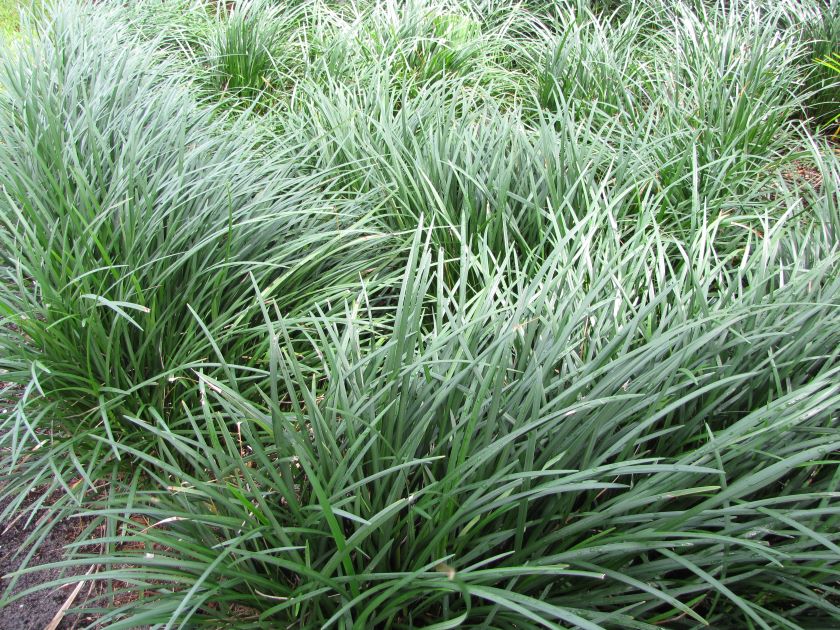
Mondo grass is a lot like liriope in both look and care. It’s a popular plant used in Japanese gardens and is also known as Japanese lilyturf. Like liriope, it produces purple flowers in the summer that turn to dark berries in the fall.
Mondo grass is one of the best Florida ground cover plants for shade. Add it to spots in your yard where sod won’t grow.
- Light: full shade to part shade
- Drought tolerant: yes, once established
- Foot traffic: occasional
- Soil: clay, sandy, loamy, alkaline, acidic
- Salt tolerant: yes
- Florida native: no
9. Shore Juniper (Juniperus conferta)
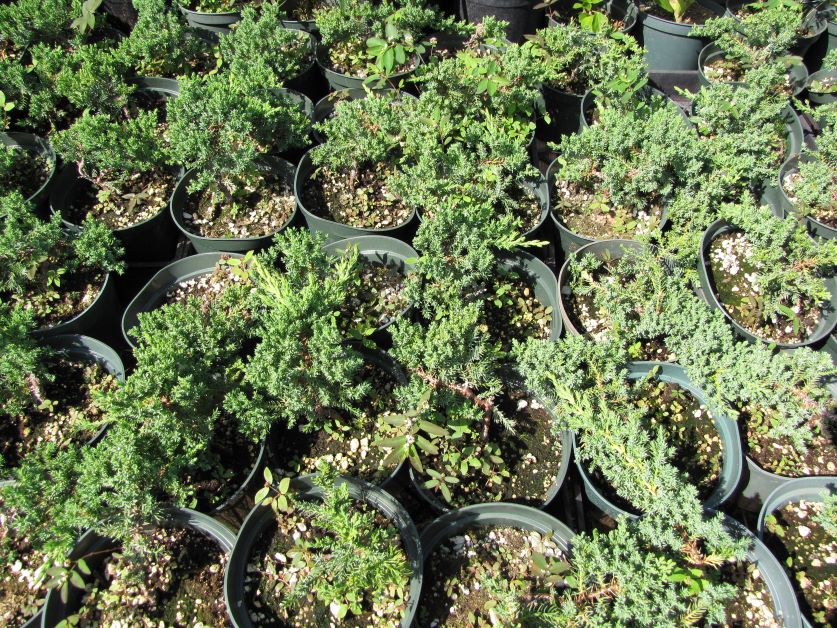
This isn’t the most dramatic plant, but it does a good job covering large areas and keeping weeds out. Shore juniper is a low-lying evergreen that spreads up to 10 feet. It can tolerate Florida’s extreme heat, the frosts of the North Florida winter, and the salt spray in coastal areas.
Shore juniper produces pretty fruit blue fruits the second year after it’s planted. It doesn’t like much pruning or water, so once it’s established you can ignore it.
- Light: full sun to part shade
- Drought tolerant: yes
- Foot traffic: low
- Soil: clay, sandy, loamy, alkaline, acidic
- Salt tolerant: yes
- Florida native: no
10. Frog Fruit (Phyla nodiflora)
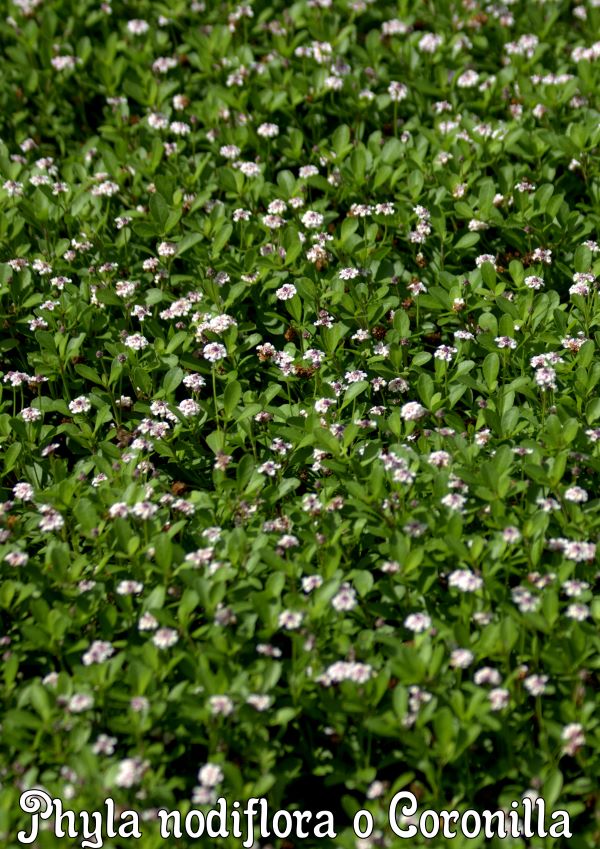
Butterflies and bees love frog fruit, so this is a good ground cover to plant if you’re looking to attract pollinators to your landscape.
Frog fruit is also known as creeping Charlie, capeweed, and carpetweed. It’s an evergreen perennial that produces unique white flowers from May through October.
- Light: full sun to part shade
- Drought tolerant: moderate
- Foot traffic: low
- Soil: sandy, clay, loamy
- Salt tolerant: yes
- Florida native: yes
11. Coral Honeysuckle (Lonicera sempervirens)
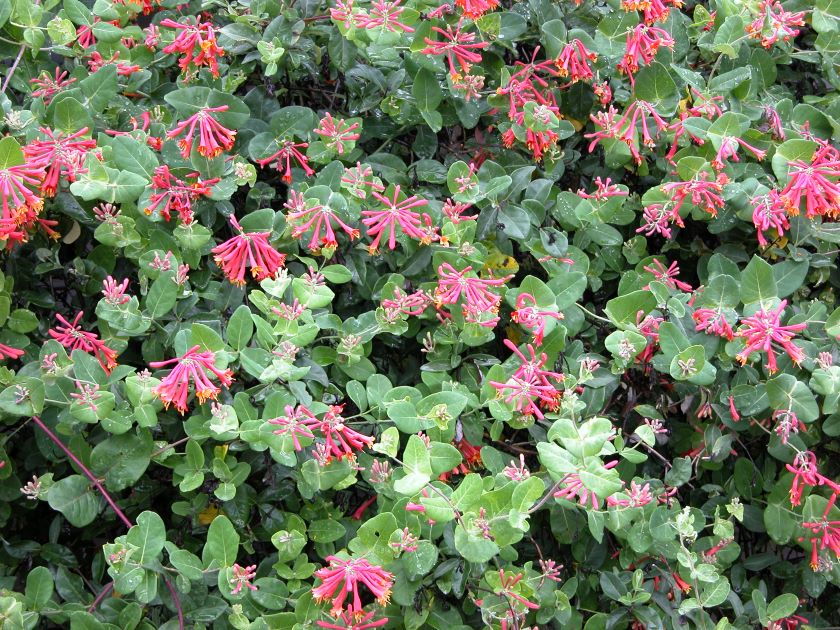
Coral honeysuckle is a bird watcher’s dream. Its trumpet-shaped flowers attract hummingbirds and butterflies in the spring and once berries form, songbirds in the fall.
This is a vining plant, so you can use it as a ground cover or you can let it grow up a trellis. For most of Florida, it’s an evergreen perennial although it will drop leaves if it gets very cold.
- Light: full sun to part shade
- Drought tolerant: moderate
- Foot traffic: no
- Soil: prefers slightly acidic
- Salt tolerant: yes
- Florida native: yes
12. Purple Queen (Tradescantia pallida)
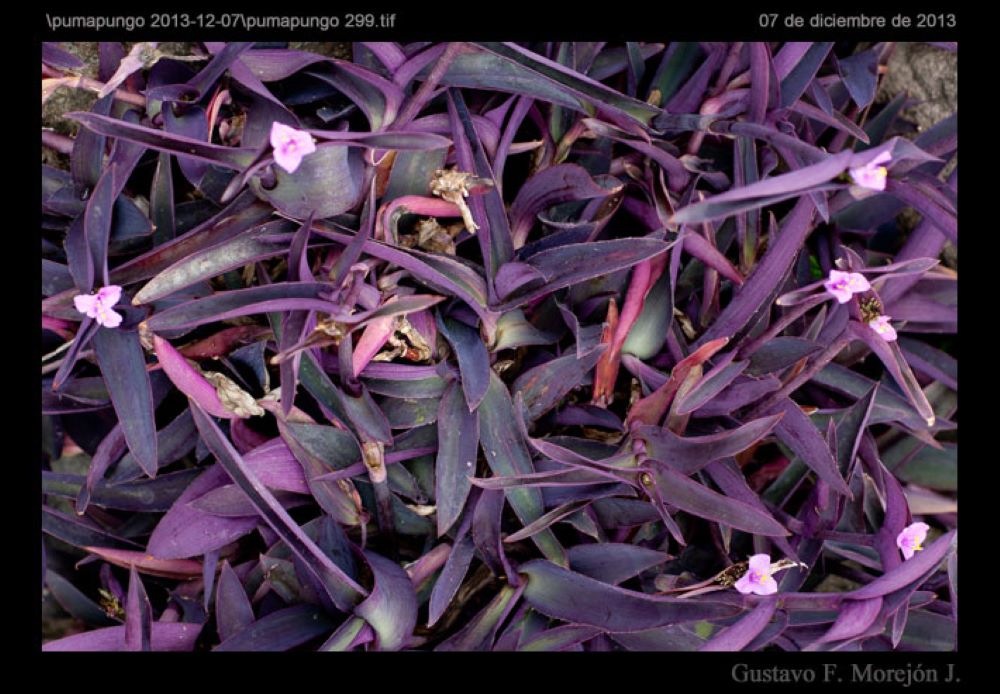
Whether you call it purple queen, purple heart, or spiderwort, this plant will bring a dramatic pop of color to your garden. This is a fast-growing, sprawling perennial that produces small, light purple flowers. It has thick, waxy leaves, similar to the texture of a succulent.
You can plant purple queen on borders, under trees, or cascading down the sides of a container.
- Light: full sun to part shade
- Drought tolerant: moderate
- Foot traffic: no
- Soil: loamy, well-draining
- Salt tolerant: moderate
- Florida native: no
13. Muhly Grass (Muhlenbergia capillaris)
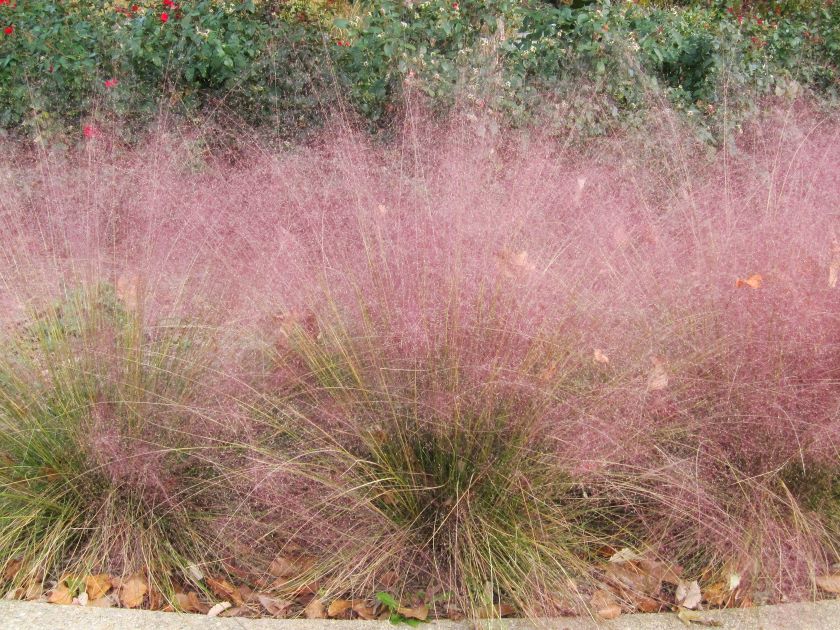
If you’ve spent any time in Florida during fall, then you’ve had to notice the beautiful muhly grass.
Most of the year, muhly grass looks like any other ornamental grass – slender, green blades that clump together and grow to about 2 to 3 feet tall. During the fall, though, it explodes with delicate and fluffy pink flower stalks that sway gently in the wind. Plant them in groups for the most dramatic effect.
- Light: full sun to part shade
- Drought tolerant: yes, once established
- Foot traffic: low
- Soil: sandy, loamy, acidic, alkaline
- Salt tolerant: moderate
- Florida native: yes
14. Horizontal Cocoplum (Chrysobalanus)
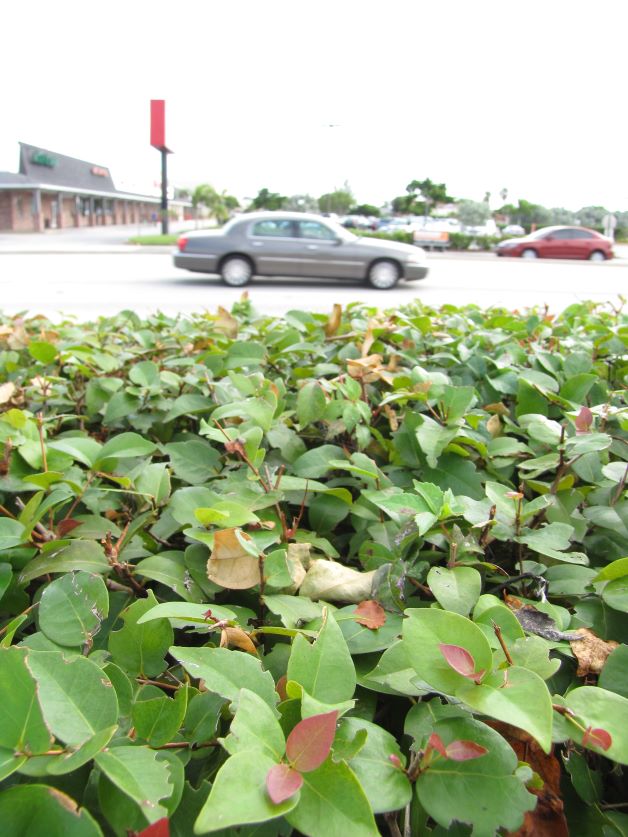
There are 3 types of cocoplum: red-tipped, green-tipped, and horizontal. While all these varieties are pretty, horizontal cocoplum is the best choice of the 3 for ground cover because it grows low and sprawling. Not only does horizontal cocoplum make a great ground cover, but it produces edible fruit, too! Cocoplums taste light, airy, and sorta sweet. They’re most often used to make jam, You can also toast cocoplum pits and eat them like almonds.
This is a cold-sensitive species but gardeners in Central Florida can grow cocoplum as long as they protect it during times of frost. Those above zone 9B will have to grow their cocoplum in containers to overwinter.
For more information, check out my cocoplum growing guide.
- Light: full sun to part shade
- Drought tolerant: moderate, more so when established
- Foot traffic: low
- Soil: sandy, loamy, clay, acidic, alkaline
- Salt tolerant: yes
- Florida native: yes
Featured image photo credit: Sara “Asher” Morris
Disclaimer: Offbeet-gardener is reader-supported. At no extra cost to you, I receive commissions from purchases made through links in this post.

